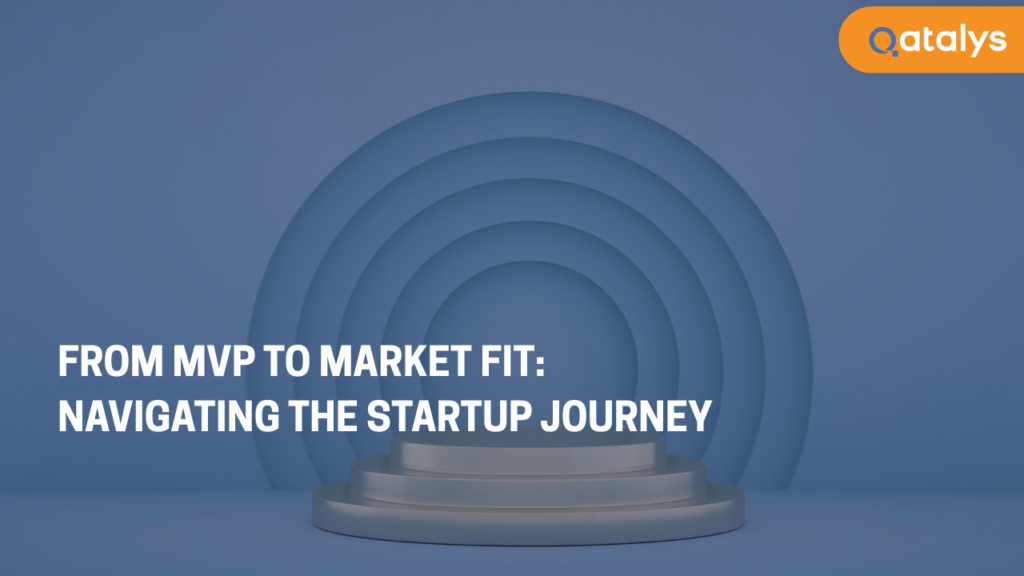Digital Transformation: Why 2025 Is the Year to Act
Remember when having a basic website meant you were ahead of the curve? In 2025, that’s ancient history. Today, digital expectations are through the roof – customers expect personalized, real-time interactions, operations are driven by data, and emerging tech is changing how industries function almost overnight.
Digital transformation isn’t just a trend anymore – it’s the foundation of staying relevant, resilient, and ready for what’s next.
Whether you’re in manufacturing, retail, healthcare, or finance, your competitors are already moving fast. And if your business is still debating whether to “go digital,” you’re already behind.
94% of companies are actively investing in digital transformation. The remaining 6% are falling dangerously behind. Source
In this blog, we’ll break down:
- What digital transformation really means (no jargon, just clarity)
- Why it’s critical for your business in 2025 and beyond
- How to start – even without a massive tech budget
- And what you can do today to set the right direction
Let’s get into it.
What is Digital Transformation? (And What It’s Not)
Let’s clear something up: digital transformation isn’t just about technology. It’s about rethinking how your business operates, delivers value, and competes in a digital-first world.
It’s not just moving to the cloud. It’s not just launching an app. And it’s definitely not just automating a few tasks.
Think of it like a full-scale renovation – not a new coat of paint. You’re redesigning the way your business works from the ground up.
At its core, digital transformation is the integration of digital technologies into every aspect of your business – strategy, culture, operations, customer experience, and beyond. It’s a mindset shift that requires organizations to:
- Adapt quickly to change
- Make smarter decisions using data
- Deliver better, faster, more personalized experiences
- Empower employees with modern tools
- Stay ahead of market and tech disruptions
What It Typically Involves:
- Cloud Computing – Scalability, agility, and real-time access (think Netflix replacing DVDs)
- Data & Analytics – Predictive insights and smarter forecasting
- AI & Automation – From chatbots to automated workflows that save time and resources
- Internet of Things (IoT) – Connected systems that track, alert, and optimize in real time
- Digital Culture – A shift in how teams work, experiment, and embrace new tools
So no – it’s not just about “tech upgrades.” It’s about building a smarter, faster, more adaptive business.
Why Your Business Needs Digital Transformation Now
In 2025, digital transformation isn’t just a smart move – it’s survival.
1. Operational Efficiency at Scale
Still relying on manual processes or outdated software? You’re not alone – but you’re at risk. Digital transformation helps streamline operations, reduce waste, and free up your team to focus on what matters.
According to recent studies, businesses that embrace digital tools report up to 63% improvement in overall performance. Source
From automating repetitive tasks to integrating systems that talk to each other, the gains in speed and accuracy can’t be overstated. What used to take hours now happens in minutes – with fewer errors and less friction.
2. Customer Experience as a Competitive Advantage
Today’s customers don’t compare you to your direct competitors – they compare you to Amazon, Netflix, and Uber. They expect:
- 24/7 availability
- Personalized recommendations
- Instant responses
- Consistent experiences across every channel
Digital transformation helps you meet – and exceed – these expectations. Whether it’s AI-powered support, unified customer profiles, or faster delivery models, you’re building loyalty by design, not luck.
3. Data-Driven Decision Making
Gut feeling won’t cut it in today’s market. Businesses that make data-backed decisions are quicker to adapt, better at forecasting, and more likely to spot growth opportunities before the competition does.
Digital transformation gives you the tools to:
- Understand real-time customer behavior
- Identify bottlenecks in your workflows
- Predict trends and pivot accordingly
- Track ROI and make smarter investments
In 2025, data is no longer a byproduct – it’s a core business asset.
What’s Coming in 2025: Key Tech Trends That Will Reshape Business
If the past decade was about going digital, 2025 is about accelerating smarter, faster, and more connected.
The landscape is shifting rapidly, and staying ahead means understanding where the world is headed. Here are a few trends that are no longer “emerging” – they’re here, and they’re redefining business as we know it.
1. Agentic AI
Artificial Intelligence is evolving from a support tool to a co-pilot in decision-making. We’re now seeing AI systems that can autonomously:
- Handle complex customer queries
- Generate marketing content
- Analyze massive datasets in seconds
These are not just assistants – they’re agents that act on behalf of your business, increasing efficiency and scaling decision-making.
2. Hyper-Personalization
Customers no longer accept generic experiences. With access to granular user data, businesses can tailor:
- Product recommendations
- Pricing offers
- Email sequences
- UX flows
Think Netflix knowing your next binge-worthy show – applied to every touchpoint in your business.
3. 5G + Edge Computing
5G is unlocking ultra-low latency and real-time processing at scale. Paired with edge computing, it enables:
- Real-time logistics tracking
- Instant AR/VR experiences
- Smarter IoT applications in factories and healthcare
4. Blockchain & Digital Trust
Blockchain isn’t just about crypto. In 2025, it’s enabling:
- Transparent supply chains
- Tamper-proof records
- Smart contracts and decentralized identity
Trust and security are becoming as important as speed – and blockchain provides both.
5. No-Code/Low-Code Platforms
Democratizing development is a big deal. Business teams can now build workflows, apps, and dashboards without writing a single line of code – freeing up IT and accelerating transformation from the inside out.
These aren’t distant concepts. They’re active drivers of disruption – and early adopters are already gaining an edge.
Common Roadblocks (and How to Overcome Them)
Let’s be honest – digital transformation sounds exciting, but it’s not always smooth sailing. Many businesses hit the same walls. The difference between success and failure? Knowing the obstacles before you crash into them.
1. Employee Resistance to Change
New tools often spark fear: “Will I be replaced?” or “I don’t know how to use this.”
Fixes:
- Communicate the “why” behind the transformation.
- Involve teams early.
- Invest in training and support, not just tech.
2. Security & Compliance Concerns
More digital tools mean more data – and more vulnerabilities.
Fixes:
- Build with security in mind from Day 1.
- Partner with providers who offer compliance-ready solutions and ongoing audits.
3. Budget Constraints
Transformation sounds expensive – and it can be, if approached the wrong way.
Fixes:
- Start small. Focus on high-impact, low-risk projects that prove value early.
- Use cloud-based, scalable tools with pay-as-you-go pricing.
4. Legacy Systems Holding You Back
Outdated software, clunky databases, disconnected tools – you know the type.
Fixes:
- Use an integration-first approach: API-friendly solutions, modular upgrades.
- Migrate step-by-step instead of all at once.
5. Lack of Clear Strategy
Jumping into digital transformation without a roadmap is a fast track to wasted time and money.
Fixes:
- Define your goals, timelines, KPIs, and team roles upfront.
- Align leadership on the “north star” for transformation.
Pro tip: Most digital transformation failures aren’t due to bad tech – they happen because businesses underestimate the people and process side of change.
How to Start Your Digital Transformation Journey
Feeling overwhelmed? You’re not alone. The good news is: you don’t need to do everything at once. The key is starting smart and moving with intention.
Here’s a practical roadmap to help you begin:
1. Assess Where You Are
Take a clear-eyed look at your current digital state:
- What tools are working?
- Where are the bottlenecks?
- What do employees or customers regularly complain about?
A digital audit – of your tech stack, workflows, and customer experience – will help you identify quick wins and deeper gaps.
2. Set Specific Business Goals
Don’t transform for transformation’s sake. Ask:
- Are we trying to reduce turnaround time?
- Improve customer satisfaction?
- Enable better decision-making?
- Launch new digital services?
Define outcomes first, then explore tools – not the other way around.
3. Choose the Right Technology (Not the Flashiest One)
There are endless solutions in the market. Focus on tools that:
- Integrate with your existing systems
- Solve specific pain points
- Scale as you grow
- Are intuitive enough to ensure adoption
Think: practical over trendy.
4. Get Buy-In from Your Team
Even the best systems will flop if no one uses them.
- Involve key teams early in the process
- Explain the “why” behind each change
- Offer hands-on training and ongoing support
Transformation is as much about people and culture as it is about code and platforms.
5. Start Small, Then Scale
Begin with a pilot project that can:
- Deliver results in 30–90 days
- Demonstrate clear ROI
- Build internal momentum
Once you see success, scale up with confidence and proof.
This isn’t a one-time upgrade. It’s a continuous evolution.
Why Qatalys is Your Digital Transformation Partner
At Qatalys, we bring 30+ years of experience helping businesses – from startups to Fortune 500s – navigate digital change with clarity and confidence.
We don’t push tools. We build solutions that align with your business goals, integrate seamlessly, and scale with you.
- Strategy-first approach tailored to your maturity and outcomes
- End-to-end delivery from roadmap to execution and beyond
- 98% client satisfaction built on trust, agility, and results
If you’re serious about transformation, we’re ready to help you make it real.
Conclusion: Start Small. Start Smart. Start Now.
In 2025, digital transformation isn’t a future strategy – it’s a now strategy. The businesses that adapt today are the ones that will thrive tomorrow.
But here’s the thing: you don’t need a massive budget or a 12-month plan to get started. What you need is a clear direction, the right partners, and the willingness to evolve – one smart step at a time.
So whether you’re aiming to streamline operations, elevate customer experiences, or unlock new revenue streams, digital transformation is how you get there.
The goal isn’t to be the most high-tech business.
It’s to be the most relevant, efficient, and resilient one in your space.
Ready to Begin?
Let’s explore what transformation could look like for your business.
Contact us today for a free digital transformation consultation and take the first step toward a smarter, future-ready organization.
Frequently Asked Questions
Q: How much does digital transformation cost?
A: It varies widely, but you can start small and scale up. Many cloud-based solutions offer pay-as-you-go models.
Q: How long does it take?
A: Digital transformation is an ongoing journey, not a destination. Initial projects can take 6-18 months, but true transformation is continuous.
Q: Can small businesses benefit from digital transformation?
A: Absolutely! In fact, smaller businesses often have an advantage because they can implement changes more quickly than larger organizations.
Q: What’s the role of leadership in digital transformation?
A: Leaders need to champion the change, set clear vision, and ensure proper resources and support are available. Ready to start your digital transformation journey? The future won’t wait – and neither should you.








